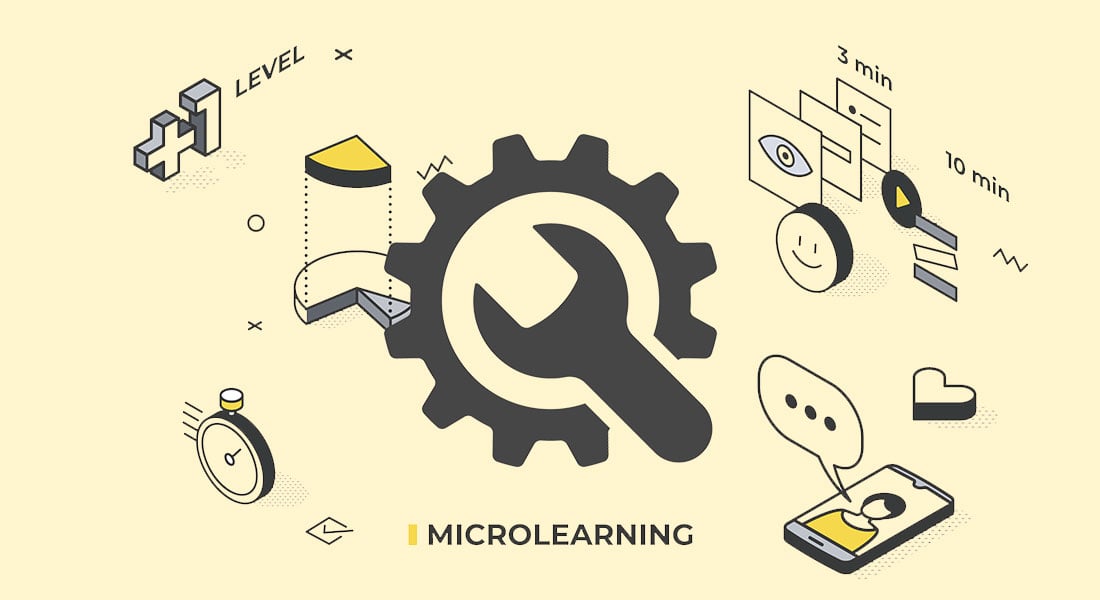Trick or Teach? Assessments in Microlearning to Reinforce Learning

With the evolution of e-learning, the expectations of trainees have also evolved. Trainees demand only that information which will positively impact their performance, and seek the freedom to choose when, where, and what they want to learn. Microlearning is the ideal solution to meet these demands. It provides high impact learning that is suited for better application on the job.
→ Download Now: Microlearning — Where Does It Fit in Your Learning Strategy?
The true impact of microlearning can be gauged through effective assessment strategies. Since microlearning intends to improve performance, it is essential to have an assessment at the end of each microlearning module. This not just motivates learners to apply and retain information, but also helps you review what the learner has retained from the learning.
Assessments at the end of each module are ideal, but the catch is, for microlearning they cannot be the run-of the-mill assessments used for regular e-learning courses. These assessments require more creative thinking. Let’s explore a few options.
Interactive Quizzes
Instead of opting for a series of questions or a pop quiz, which will seem out of place in a microlearning environment, have an interactive quiz at the end of the lesson, where the learner is given multiple choices in the answer. The response he selects will take him on a different course of action. This in turn will help him gauge the impact of his decision.
So, it is important to provide clear feedback on every choice he makes to reinforce his learning. Such quizzes help trainers gauge the effectiveness of their training while allowing learners to determine how they are progressing along the way.
Games
Game-based assessments, no doubt, up the engagement quotient of a microlearning course. If games are used, they must be short and brief, keeping with the characteristics of a microlearning course. Games should be highly interactive to catch learners’ attention and inspire them to learn while playing. They should engage and motivate the learner by giving badges and rewards and display the top competitors in leaderboards.

Where Does Microlearning Fit in Your Learning Strategy?
Uncover the Secrets to Crafting High-performing Micro Assets!
- What Microlearning is and What it is NOT?
- Types of Microlearning Assets
- Tips and Tools for Rapid Microlearning Development
- And More!
Game-based assessments take the pinch out of testing and quick, interesting games can make microlearning fun. For instance, consider a set of dos and don’ts on fire safety. What would you prefer? Reading them in a table or arriving at the correct answers by answering a pack of visual flashcards?
Scenarios
Include scenarios related to the training and pose questions on what learners ought to do. Another option is to convert it into a game with short role-play scenarios.
For instance, consider a scenario for sales training. You can give a brief explanation of the concepts, followed by questions for the learner to take decisions based on a scenario.

Leverage Mobile Technology
Microlearning is ideal to be delivered on mobile devices because of its bite-sized nature. You can leverage this by using mobile devices to deliver assessments as well. Flashcards that contain information and brief questions on a module can fit on a mobile screen, making it easy for the learner to access it on the go.
Mobile based apps can deliver interactive assessments, learners can log in during their spare time and attempt quizzes, after going through the course on their mobile devices. Mobile devices provide a multimedia experience; interactive videos with questions at the end can be another way to assess learners.
Assessments in microlearning can be designed to truly engage your learners and you can use mobile technology to make them interesting. They should be well-designed to enable the learner to link his performance to the content he has learned over a certain period of time.



![Microlearning Trends to Look Out For in 2024 [Infographic]](https://blog.commlabindia.com/hubfs/blogs/microlearning-trends-look-out-for-info.jpg)

